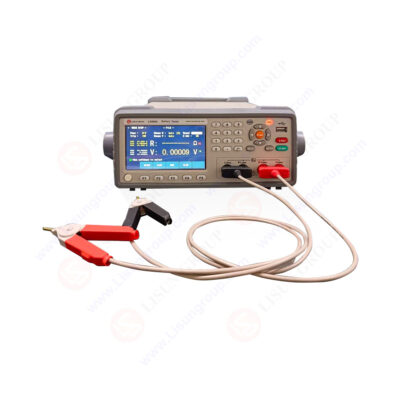
Batteries are indispensable energy sources widely used in various electronic devices and transportation. However, ensuring the safety and stability of batteries remains a focal point for both the public and professionals. To guarantee high safety and reliability throughout their usage, the battery internal resistance tester has emerged as a crucial tool, safeguarding battery performance.
The battery internal resistance tester evaluates the health of batteries by measuring their internal resistance. Elevated internal resistance may indicate aging or potential failure risks, making timely detection essential for preventing hazards. With its high precision and convenience, the battery internal resistance tester is extensively applied in electric vehicles, smartphones, laptops, and more, playing a pivotal role in battery safety management.
The battery internal resistance tester effectively measures the voltage and internal resistance at both terminals of rechargeable batteries, assessing their capacity and technical state. Users can select different testing functions as per their needs, including resistance testing, voltage testing, and capacity estimation. The results of resistance testing are crucial during the pairing of new battery packs to ensure consistent internal resistance matching.
Extensive testing confirms that the internal resistance of batteries increases with decreasing capacity. This indicates that as batteries age and their capacity diminishes, their internal resistance correspondingly rises. These test results facilitate the identification of deteriorating battery performance by comparing internal resistance values across battery sets or tracking changes in individual cell resistance. Monitoring changes in individual cell resistance enables the assessment of battery aging, thereby facilitating effective battery maintenance.
During battery operation, issues such as overcurrent or short circuits can be detected using the battery internal resistance tester, ensuring early identification of safety risks and prompt preventive measures. Typically, the tester consists of essential components: the testing circuit, data acquisition unit, display screen, and power module.
The testing circuit is critical for performing tests, often designed using instruments like digital multimeters or oscilloscopes. The data acquisition unit converts and processes test results into digital signals, employing microcontrollers or microchips. The display screen provides test results and operational prompts, while the power module ensures stable power supply to the entire instrument.
By utilizing the battery internal resistance tester, industries and consumers alike can enhance battery safety, reliability, and longevity, thereby supporting sustainable energy practices in modern society.
Battery Tester LS5562 AL3
Shanghai LISUN LS5562 series of high-voltage, high-precision battery internal resistance testers are special designed to meet battery industry test requirements, and it is developed for the testing of low-resistance and large-scale lithium battery packs and high-speed assembly line sorting. With many years of technical advantages in the field of impedance testing, the LS5562 series come with highest test resolution to reach 0.1uΩ and voltage resolution up to 10uV. The instrument have equipped with RS232C and HANDLER as standard interfaces, which can easily set up an automated test system.
Technical Specification:
• Included 4.3-inch LCD screen display, battery internal resistance R and voltage V are displayed at the same time;
• Minimum resolution 0.1uΩ, 10uV;
• High precision, good stability, the fastest test speed up to 100 times/second;
• Test lead contact check function;
• Built-in comparator function, 10-level sorting;
• Equipped HANDLER sorting interface to achieve automatic online function;
• Standard RS232 communication interface (Optional: RS485), support SCPI and Modbus (RTU) two communication modes;
• The test conditions are automatically saved, with 50 groups inside the instrument and 500 groups of setting files in the U disk
• Invention patent, no need to install software, it can upload test results to the computer directly.
Application:
• Deficiency of alkaline batteries and lead battery measurement and life assessment
• UPS detection
• Factory inspection of batteries
• High -precision lithium battery internal resistance and voltage detection
• High -speed mass production random inspection of buttons
• Measurement of fuel cell group
• Test of high -voltage battery packs such as electric vehicle lithium batteries
• Multi -section series high -voltage lithium battery internal resistance and voltage measurement
• Measurement of hydrogen fuel cell resistance and voltage
• The supporting automatic sorting machine performs battery internal resistance+voltage automatic test
• The deterioration state and life evaluation of the battery
• ESR test of super capacitance (low internal resistance capacitor)
https://www.lisungroup.com/news/technology-news/battery-internal-resistance-tester-a-key-tool-ensuring-energy-security-in-modern-society.html


Comments
Post a Comment